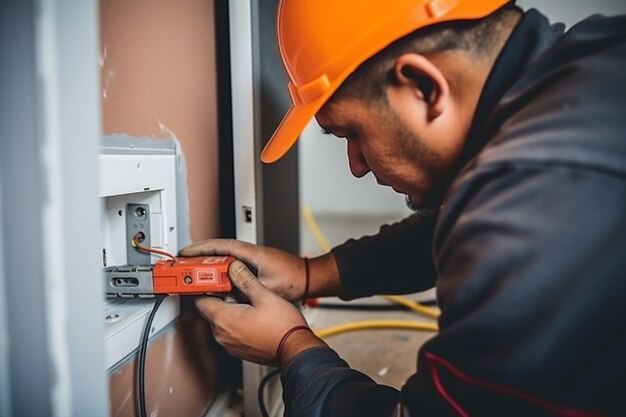Solving the Mystery: Why Your Refrigerator Trips the Breaker & How to Fix It
You open your fridge in eager anticipation of a late-night snack, and suddenly... darkness. The circuit breaker has tripped again, and your refrigerator has fallen silent. If this story sounds familiar, you're not alone. A refrigerator tripping a breaker is a common issue that leaves many homeowners frustrated. Let's delve into what's causing this annoying problem and explore steps you can take to get your refrigerator — and your peace of mind — back on track.
⚠️ Understanding the Basics: Why Does a Refrigerator Trip a Breaker?
The first step to solving a problem is understanding it. When your refrigerator trips the breaker, it generally means there's a disruption in the electrical circuit. This is akin to a bodily reflex that shuts things down to prevent damage. Here are some of the most common reasons your refrigerator might be causing this:
Overloaded Circuit
A circuit can only handle so much power. If your refrigerator shares an outlet with high-powered appliances, the circuit might become overloaded, causing it to trip.
Ground Fault
A ground fault occurs when the electrical current finds a path to the ground, usually through water or a metal object. This can stem from a loose connection or damaged wiring in appliances and poses a risk of electrical shock.
Short Circuit
A short circuit happens when a "hot" wire touches a "neutral" wire, leading to excessive electrical flow, overheating, and potential tripping of the breaker.
Surge in Power
When your refrigerator kicks into a defrost cycle or the compressor starts, the sudden surge might exceed what the circuit can handle.
🛠️ Diagnosing the Problem: What to Check First
Before jumping into solutions, it's crucial to identify what's at the root of the issue. Here are some initial checks you can perform:
1. Inspect the Refrigerator's Power Cord
- Look for visible damage: Ensure that the power cord is not frayed or damaged.
- Connection: Make sure the plug is inserted securely into the outlet.
2. Examine the Circuit Breaker
- Visually check the circuit breaker for any visible damage or wear.
- Test the breakers: Sometimes, breakers themselves can be faulty and trip prematurely.
3. Check the Outlet and Wiring
- Inspect the outlet: Ensure the outlet is not loose.
- Wiring issues: If you suspect wiring problems, it might be best to consult a professional electrician.
4. Evaluate Appliance Usage
- Peak power usage: Consider if any high-powered appliances are operating simultaneously on the same circuit.
🔧 DIY Fixes: Steps You Can Take to Solve the Problem
Once you've diagnosed the likely cause, you can move on to addressing it. Here are some DIY methods that might help resolve the issue:
Switch to a Dedicated Circuit
If your refrigerator is currently sharing a circuit with other appliances, moving it to a dedicated one can prevent overloading.
Install a Ground Fault Circuit Interrupter (GFCI)
A GFCI can detect ground faults and shut off the power quickly, adding a layer of safety. Consult a professional if you're unsure how to install it.
Regular Maintenance
Regular maintenance of your fridge can help prevent many common issues. Keep these tips in mind:
- Clean the coils: Dusty condenser coils can lead to inefficiency and issues for your refrigerator.
- Ensure proper ventilation: Make sure there’s sufficient space around the fridge for airflow.
- Defrost regularly: This can help prevent the internal buildup that stresses the compressor.
Address Short Circuits
After isolating the short circuit, addressing it might involve repairing or replacing faulty wiring or parts. Always consult an electrician if you're not experienced with electrical repairs.
🧠 When to Seek Professional Help
There are times when professional expertise is essential:
- Persistent Tripping: If the breaker continuously trips after your interventions.
- Unidentified Faults: When you cannot pinpoint the source of the problem.
- Complex Electrical Issues: Always err on the side of caution when dealing with electricity.
Choosing the Right Technician
When selecting a professional:
- Check Credentials: Verify their licensing and certifications.
- Read Reviews: Seek recommendations or reviews about their service.
- Get Multiple Quotes: Ensure that you're getting a fair price for the service.
📋 Quick Reference Guide
Here's a brief summary with practical consumer tips and key takeaways:
| Issue | Solutions |
|---|---|
| Overloaded Circuit | Move the fridge to a dedicated circuit; avoid plugging in high-demand appliances on the same circuit. |
| Ground Fault | Install a GFCI outlet; fix any frayed wires. |
| Short Circuit | Identify and repair faulty wiring. Consult a professional if necessary. |
| Regular Maintenance | Clean coils, ensure ventilation, and perform regular defrosting. |
💡 Proactive Tips for Refrigerator Care
- Position Correctly: Ensure your refrigerator is level to avoid undue strain on components.
- Avoid Frequent Door Opening: This can overwork the cooling system and might lead to power surges.
- Monitor Temperature: Keeping the fridge and freezer at optimal temperatures ensures efficiency.
Understanding Appliance Compatibility
Modern homes have more gadgets than ever before. Understanding your home's electrical capacity and ensuring compatibility between your appliances and circuits can prevent many common tripping issues.
Resolving why your refrigerator trips the breaker can range from simple connectivity fixes to more complex electrical issues. By understanding the potential causes and following outlined strategies, you can often identify and resolve the problem yourself. Yet remember, safety is paramount. When in doubt, calling a professional ensures both your safety and the longevity of your refrigerator. Addressing these issues not only helps prevent inconvenient power disruptions but also maximizes the efficiency and life of your appliances.
